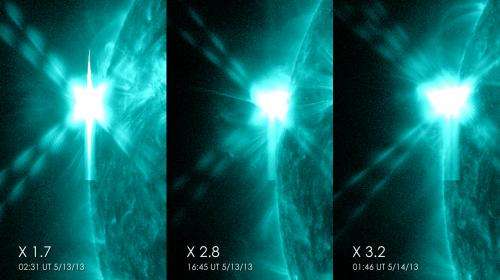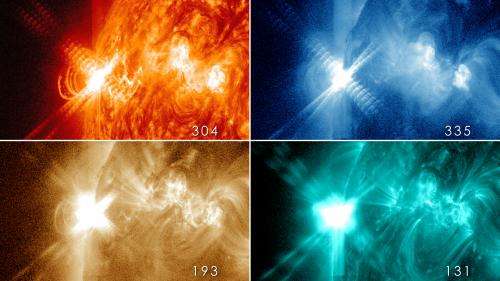These pictures from NASA's Solar Dynamics Observatory show the three X-class flares that the sun emitted in under 24 hours on May 12-13, 2013. The images show light with a wavelength of 131 angstroms, which is particularly good for showing solar flares and is typically colorized in teal. Credit: NASA/SDO
The sun emitted a third significant solar flare in under 24 hours, peaking at 9:11 p.m. EDT on May 13, 2013. This flare is classified as an X3.2 flare. This is the strongest X-class flare of 2013 so far, surpassing in strength the two X-class flares that occurred earlier in the 24-hour period.
The flare was also associated with a coronal mass ejection, or CME. The CME began at 9:30 p.m. EDT and was not Earth-directed. Experimental NASA research models show that the CME left the sun at approximately 1,400 miles per second, which is particularly fast for a CME. The models suggest that it will catch up to the two CMEs associated with the earlier flares.
Four images from NASA's Solar Dynamics Observatory of an X3.2-class flare from late at night on May 13, 2013. Starting in the upper left and going clockwise, the images show light in the 304-, 335-, 193- and 131-angstrom wavelengths. By looking at the sun in different wavelengths, scientists can view solar material at different temperatures, and thus learn more about what causes flares. Credit: NASA/SDO
The merged cloud of solar material will pass by the Spitzer spacecraft and may give a glancing blow to the STEREO-B and Epoxi spacecraft. Their mission operators have been notified. If warranted, operators can put spacecraft into safe mode to protect the instruments from solar material.
Provided by NASA's Goddard Space Flight Center

























